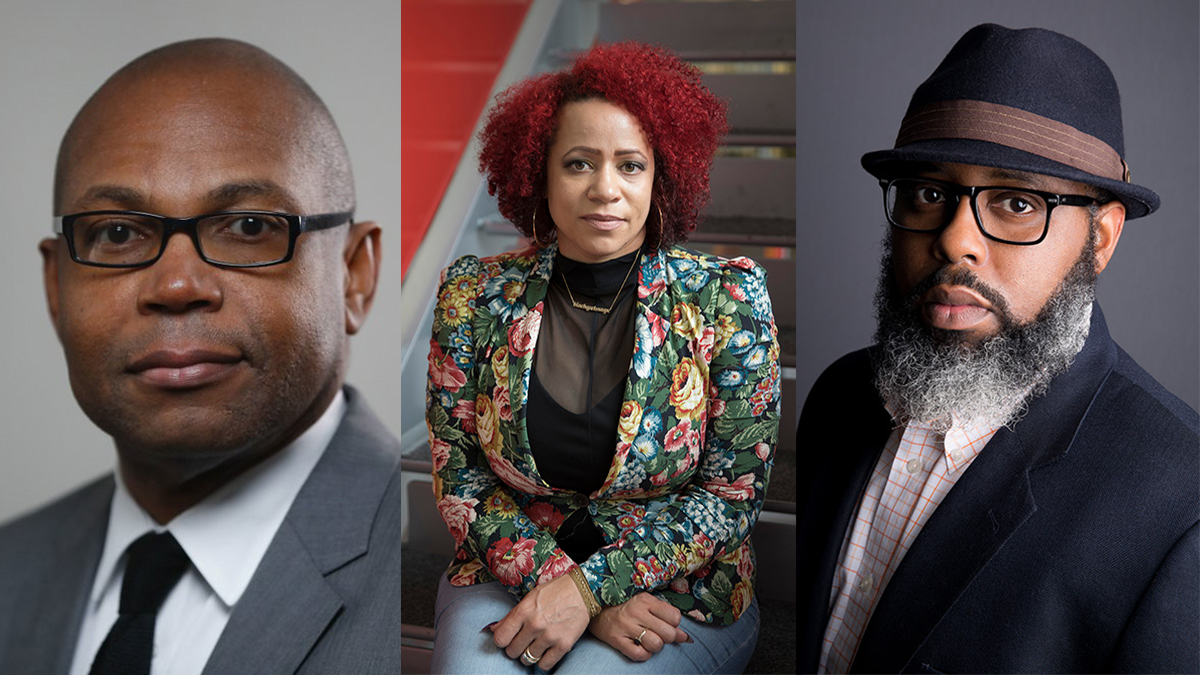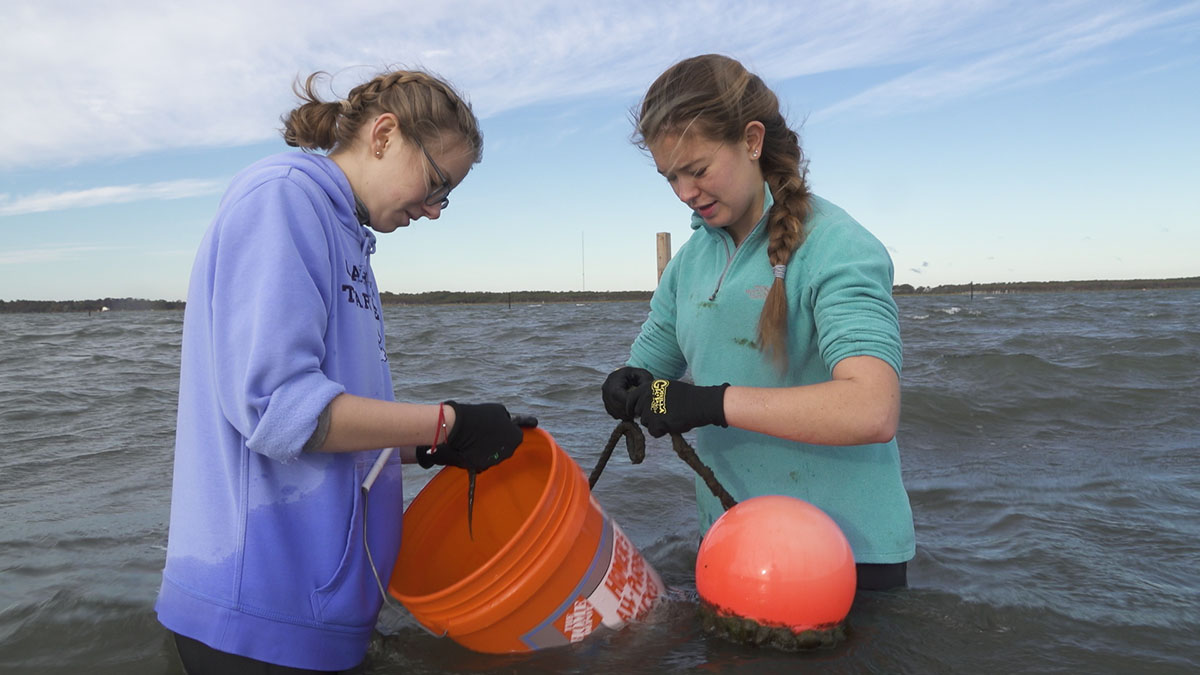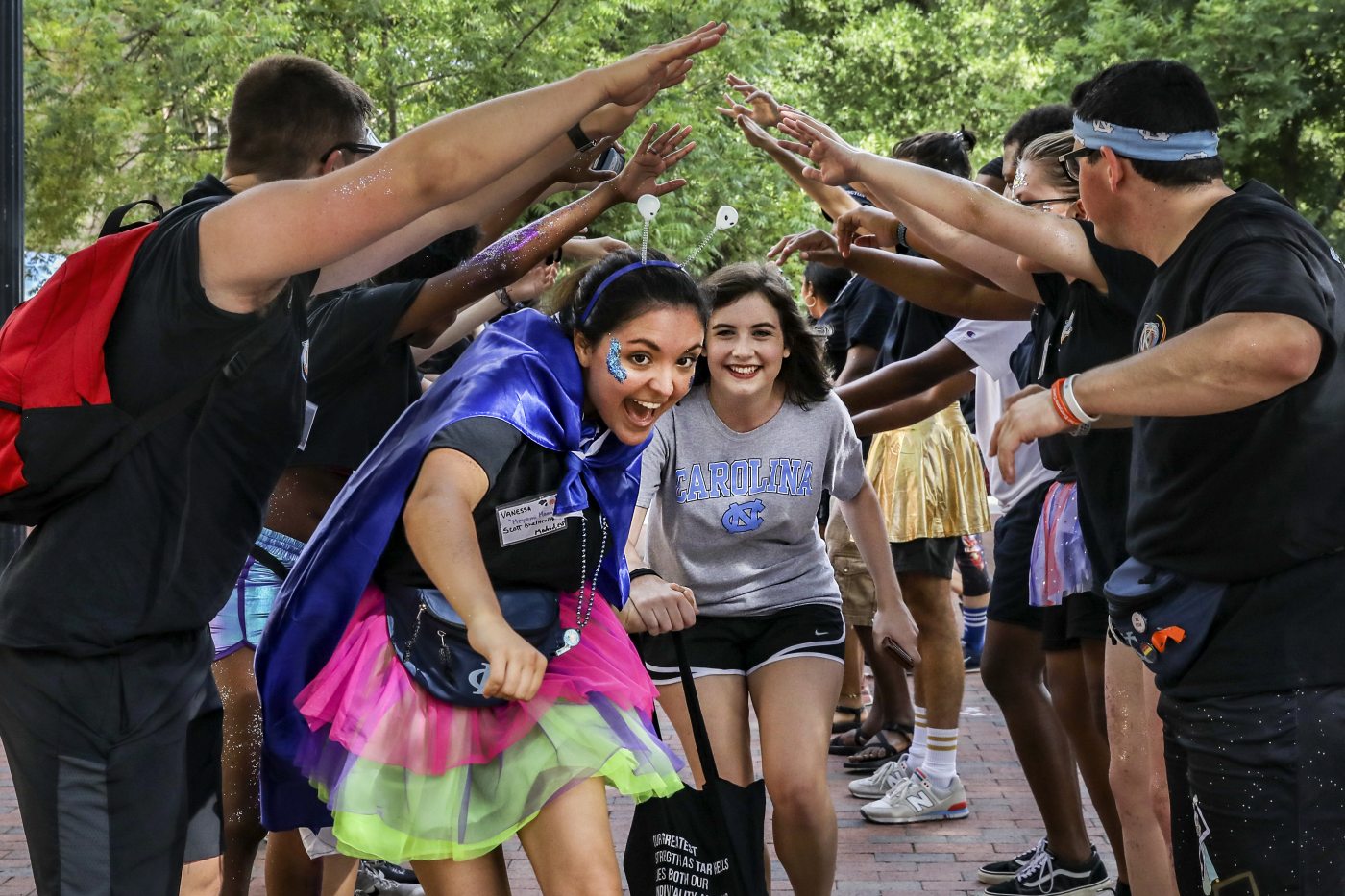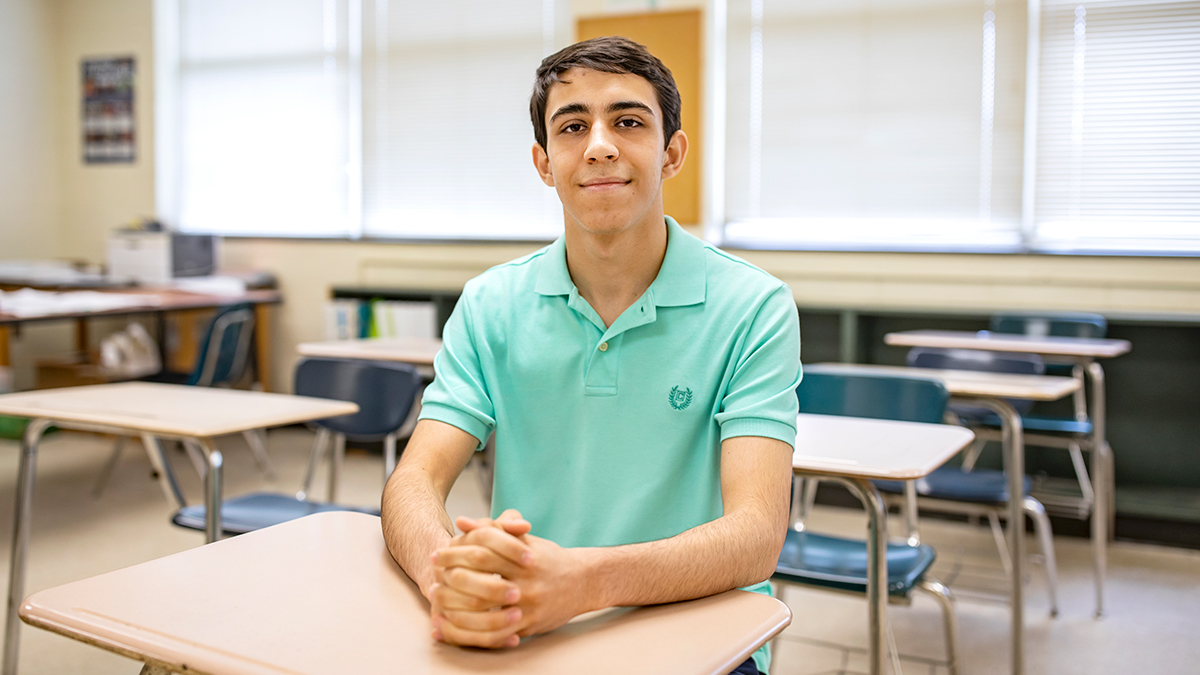Carolina welcomes more than 5,000 new undergraduate students to campus
The students represent the most geographically diverse and globally engaged group to enroll at Carolina.
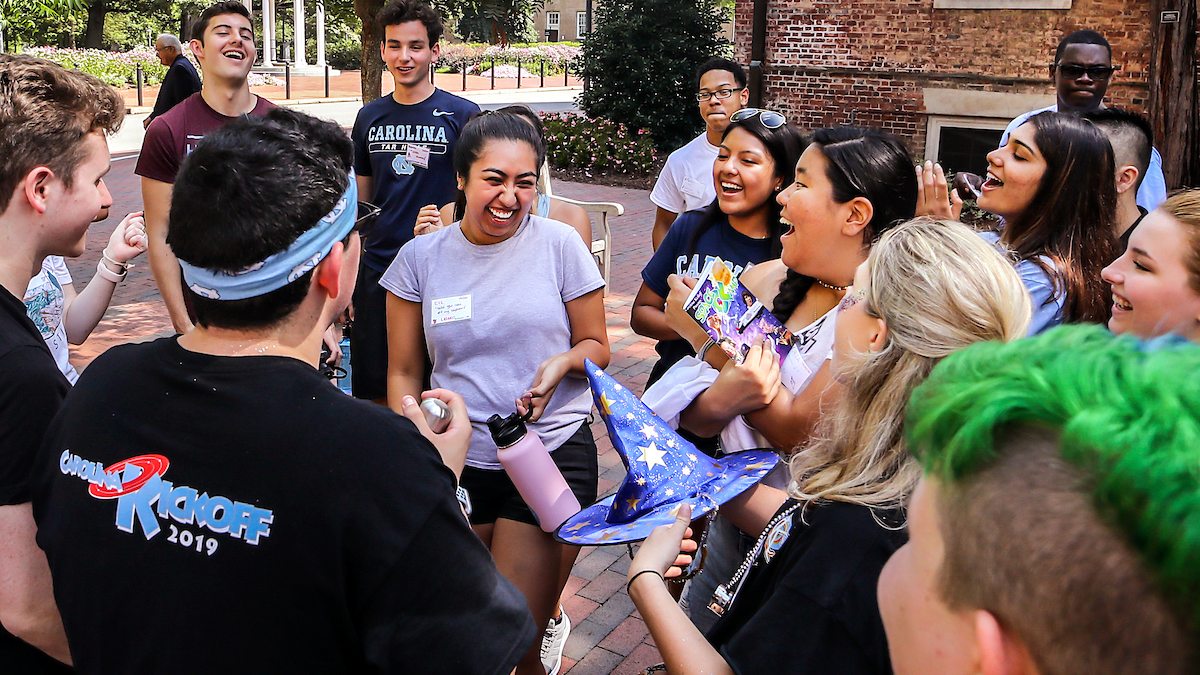
The University of North Carolina at Chapel Hill will welcome 4,195 first-year students and 852 transfer students to campus as classes begin on Aug. 20. The University’s new students were selected from a record number of applicants, and they represent the most geographically diverse and globally engaged group to enroll at Carolina.
The University received a record 44,859 first-year applications this year – 4% more than last year. This is the 14th consecutive year in which applications have increased.
The overall admit rate fell from 22% to 21% this year, and the North Carolina admit rate increased from 41% to 42%.
The incoming class includes 265 students from one of the 75 partner high schools served by the Carolina College Advising Corps, a public service of the University that seeks to increase college-going rates among low-income, first-generation college and other underrepresented students.
Each enrolling student was admitted to Carolina after being considered individually and holistically. Admissions officers read applications one by one, striving to understand students in the context of their families, schools, and communities, and to assess how students could thrive at Carolina and contribute to the education of their fellow Tar Heels.
“We’re glad and grateful that these remarkable students have chosen UNC,” said Stephen Farmer, vice provost for enrollment and undergraduate admissions. “As we read their applications, we enjoyed getting to know these students one by one, as the unique individuals they are. We believe strongly that each of them can thrive at Carolina and help each other thrive along the way, and we’ll be excited to see the great difference they will make, both here at Carolina and far beyond.”
Meet the incoming students
All data points are preliminary and will be final after Sept. 4, the University’s official enrollment reporting date.
Transfer admissions
Approximately 39% of the enrolling transfer class is transferring from a North Carolina community college. Incoming transfer students range in age from 17- to 64-years-old and have an average college GPA of 3.7.
The transfer class includes 80 students who come to Carolina from partner community colleges served by the Carolina Student Transfer Excellence Program, or C-STEP. The program is designed to enable community college students to transfer to and graduate from UNC-Chapel Hill, and partners with 13 community colleges across the state. C-STEP students represent 9% of all enrolling transfer students.
Transfer admissions
<Academic strength
- 45% of new first-year students ranked within the top 10 students in their high school class.
- 77% ranked within the top 10% of their class.
- 94% of new first-year students have taken five or more Advanced Placement, International Baccalaureate or college-level courses while in high school.
- On the SAT, the middle 50% of students scored between 1310 and 1480.
- On the ACT, the middle 50% of students scored between 29 and 34.
- Among new transfer students, the average GPA at their previous schools was 3.7 on a 4.0 scale.
- Their top five intended majors are biology, business, computer science, political science and biomedical and health sciences engineering.
North Carolinians
Among first-year North Carolinians:
- 37%, or 1,256 students, are enrolling from a rural county.
- First-year North Carolinians come from 97 counties across the state.
First in their families
Among all first-year students, 19%, or 798 students, will be the first in their families to pursue a bachelor’s degree.
Financial Aid
Among all new first-year and transfer students:
- 38% of the incoming class will receive need-based aid, primarily in the form of grants and scholarships.
- 13% will have the opportunity to graduate debt-free under The Carolina Covenant program, which covers the full cost of a degree for eligible low-income students.
Military service
Among all new undergraduates:
- 406 enrolling first-year and transfer students indicated an affiliation with the U.S. armed forces, primarily as dependents or spouses of a military member who served or is serving.
- 23 are currently serving.
- 24 have previously served in the U.S. armed forces.
Diverse experiences
The first-year class includes students from:
- 42 states and the District of Columbia.
- 218 students are international, representing 50 countries.
- 58% of enrolling first year students have traveled outside of their home countries, an increase of 3% since last year.
Among enrolling first-year students:
- 60% are female, and 40% are male.
- 12% identify themselves as Black or African American.
- 9% identify themselves as Hispanic or Latino.
- 19% identify themselves as Asian.
- 2% identify themselves as American Indian or Alaska Native.
The student experience
- 70% of first-year students said they are very interested in having a global experience (e.g. study abroad, global internship, global research) while at Carolina.
- 96% of first-year students they hope to receive, during their time at Carolina, the experience of engaging with a broad range of ideas, perspectives and visions that differ from their own.
- 95% said they want their understanding to be broadened and refined through discussion and dialogue with classmates and professors who differ from themselves.
- 95% said they want to work with classmates who have different perspectives and different approaches to solving problems.
- 96% said they want to get better at leading, serving and working with people from different backgrounds.
- 94% said they want to deepen their appreciation, respect and empathy for other people.
Extracurricular snapshot
- 90% participated in community service.
- 51% of all incoming students held a paying job during the school year; 56% had daily responsibilities within their families.
- 64% contributed to a cause they believe in.
- 58% traveled outside their home country.
- 51% held a paying job during the school year.
- 49% held a position as president of their class or a club.
- 42% participated in religious or faith-based communities.
- 30% participated in student government.
- 32% conducted research outside the classroom.
- 21% founded an organization or started a business or non-profit.
- 19% participated in orchestra or band.
- 71% competed in a sport.
